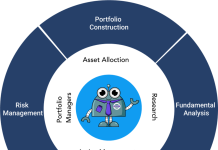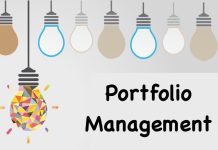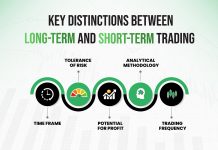
Scaling Up: The Unique Challenges of a $1M Portfolio
Managing a $1,000,000 portfolio presents both opportunities and challenges. The key is preserving wealth while generating steady, compounding returns. Unlike a small portfolio where aggressive risk-taking may be justified, a large portfolio requires discipline, diversification, and strategic risk management.
The 5% Rule: Managing Position Sizing
A fundamental rule for large portfolios is a (not THE) 5% rule—never allocate more than 5% of capital to a single stock or trade. This prevents overexposure to a single position, reducing catastrophic losses.
Key Considerations:
- Smaller accounts can afford to take concentrated bets; larger portfolios should be more diversified.
- Psychological impact: Managing larger sums can lead to performance anxiety, causing traders to hesitate on trades they would normally make in a smaller account.
- Scaling discipline: A well-structured portfolio must balance growth and risk while maintaining liquidity and flexibility.
Step 1: Diversification Across Asset Classes
A $1M portfolio should not be solely concentrated in equities. Instead, exposure to global markets, ETFs, and blue-chip stocks can help hedge against volatility.
Recommended Allocation:
| Asset Type | Allocation (%) | Example Instruments |
|---|---|---|
| U.S. Equities (Large-Cap) | 40% | S&P 500 Stocks, Blue-Chips |
| International Exposure | 15% | ETFs (EFA, EEM, FXI) |
| Hedged Stock Positions | 20% | Covered Calls, Cash-Secured Puts |
| Options Strategies | 15% | LEAPS, Ratio Spreads, Iron Condors |
| Speculative Plays | 10% | Momentum Stocks, Short-Term Options |
Step 2: Conservative Hedged Stock Positions
Long-term blue-chip stocks should form the foundation of a $1M portfolio. These companies tend to have lower volatility while offering dividends and stable returns.
Example: Covered Call on XYZ Corp
- Stock: XYZ trades at $120.
- Buy 1,000 shares at $120.
- Sell January 2026 $130 calls for $10.
- Net Cost Basis: $110 per share.
- If XYZ stays above $130, profit = $20 per share (18%).
Covered calls provide steady income while reducing downside risk. Repeating this strategy across multiple blue-chip stocks creates a strong foundation for steady portfolio growth.
Step 3: International Diversification for Stability
A strong U.S. dollar and global market cycles make international diversification crucial. Instead of picking individual foreign stocks, ETFs offer exposure with lower risk.
Example: Global ETF Exposure
- EFA (Developed Markets ETF) – Exposure to Europe and Japan.
- EEM (Emerging Markets ETF) – Exposure to China, India, and Brazil.
- FXI (China Large-Cap ETF) – Focused exposure to major Chinese stocks.
Keeping international exposure between 10-15% of the portfolio reduces risk from U.S. market downturns.
Step 4: Using Options for Strategic Growth
Options allow large portfolios to generate enhanced returns without excessive risk.
Key Option Strategies:
-
LEAPS for Long-Term Growth:
- Buy January 2026 $100 calls on a strong growth stock.
- Costs 30-40% less than buying stock outright while controlling upside.
-
Iron Condors for Passive Income:
- Sell a $110/$115 call spread and a $95/$90 put spread on a stable stock.
- Generates premium income while limiting risk.
-
Ratio Spreads for Speculative Growth:
- Buy two calls at $100 and sell one call at $110.
- Low-cost strategy with asymmetric upside potential.
Step 5: Speculative Trading – High Risk, High Reward
A small portion (10%) of the portfolio can be dedicated to high-growth, high-risk opportunities.
Example: Short-Term Speculative Trade
- Stock: ABC surges from $50 to $65 on earnings.
- Buy March $70 calls for $2.00.
- If ABC reaches $80, option value skyrockets.
High-volatility trades should have tight stop losses and proper position sizing to limit downside risk.
Step 6: Protecting Capital in a Large Portfolio
A major goal of a $1M portfolio is capital preservation. Reducing volatility through diversification, hedging, and disciplined position sizing is key.
Techniques for Managing Risk:




Final Thoughts: Managing a $1M Portfolio Successfully
A well-balanced $1M portfolio prioritizes capital preservation, steady income, and selective growth opportunities. By blending stocks, ETFs, and strategic options, traders can achieve consistent, compounding returns.
Key Takeaways:





A disciplined approach ensures long-term financial success while minimizing risk. Smart portfolio management isn’t about chasing huge wins—it’s about steady, consistent growth with well-managed risk.
Stay tuned for future articles covering advanced wealth-building strategies!
Trade wisely,
— Phil







